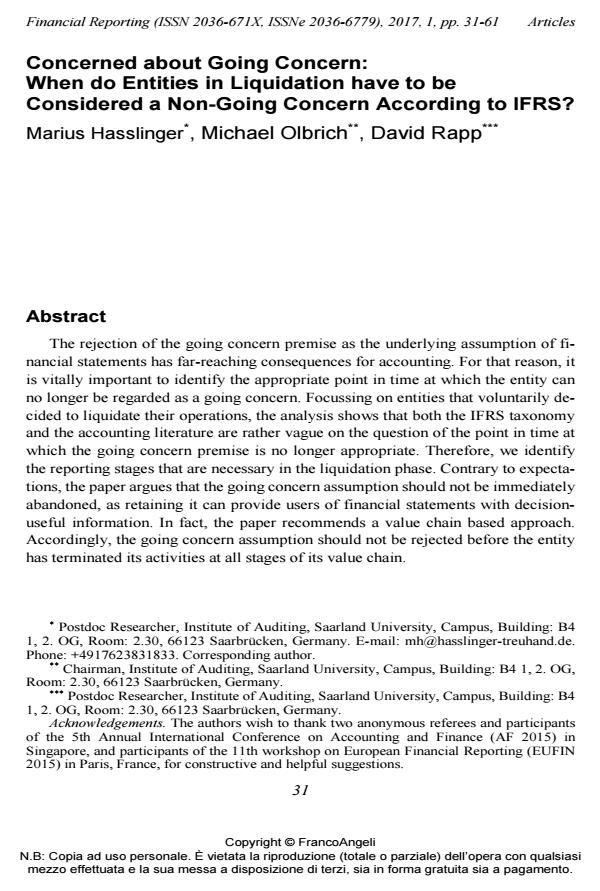Concerned about Going Concern: When do Entities in Liquidation have to be Considered a Non-Going Concern According to IFRS?
Titolo Rivista FINANCIAL REPORTING
Autori/Curatori Marius Hasslinger, Michael Olbrich, David Rapp
Anno di pubblicazione 2017 Fascicolo 2017/1
Lingua Inglese Numero pagine 31 P. 31-61 Dimensione file 315 KB
DOI 10.3280/FR2017-001002
Il DOI è il codice a barre della proprietà intellettuale: per saperne di più
clicca qui
Qui sotto puoi vedere in anteprima la prima pagina di questo articolo.
Se questo articolo ti interessa, lo puoi acquistare (e scaricare in formato pdf) seguendo le facili indicazioni per acquistare il download credit. Acquista Download Credits per scaricare questo Articolo in formato PDF

FrancoAngeli è membro della Publishers International Linking Association, Inc (PILA)associazione indipendente e non profit per facilitare (attraverso i servizi tecnologici implementati da CrossRef.org) l’accesso degli studiosi ai contenuti digitali nelle pubblicazioni professionali e scientifiche
The rejection of the going concern premise as the underlying assumption of financial statements has farreaching consequences for accounting. For that reason, it is vitally important to identify the appropriate point in time at which the entity can no longer be regarded as a going concern. Focussing on entities that voluntarily decided to liquidate their operations, the analysis shows that both the IFRS taxonomy and the accounting literature are rather vague on the question of the point in time at which the going concern premise is no longer appropriate. Therefore, we identify the reporting stages that are necessary in the liquidation phase. Contrary to expectations, the paper argues that the going concern assumption should not be immediately abandoned, as retaining it can provide users of financial statements with decisionuseful information. In fact, the paper recommends a value chain based approach. Accordingly, the going concern assumption should not be rejected before the entity has terminated its activities at all stages of its value chain.
Parole chiave:Going concern, liquidation, IFRS, winding-up.
Marius Hasslinger, Michael Olbrich, David Rapp, Concerned about Going Concern: When do Entities in Liquidation have to be Considered a Non-Going Concern According to IFRS? in "FINANCIAL REPORTING" 1/2017, pp 31-61, DOI: 10.3280/FR2017-001002